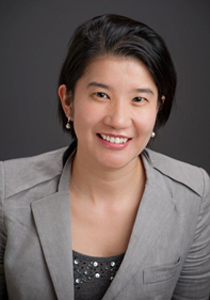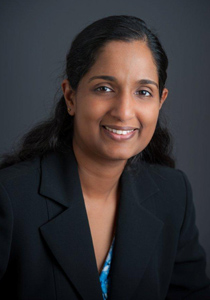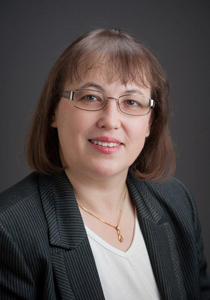Clare Boothe Luce Program Recognizes Villanova University’s Commitment to Women in Engineering
The Henry Luce Foundation has awarded a $500,000 Clare Boothe Luce (CBL) Program Grant to Villanova University’s College of Engineering in support of three CBL female professorships. This grant – which marks the first time the program has awarded three CBL professorships to the same university in one year – recognizes the College’s ongoing commitment to encouraging and supporting women in engineering. This commitment has propelled Villanova’s College of Engineering beyond the national averages for female faculty and students.
Since 1989, The Clare Boothe Luce Program has funded scholarships, fellowships, and professorships for female students and professors. In fact, it has become the single most significant source of private support for women in science, mathematics and engineering.
“The Clare Boothe Luce Grant recognizes the efforts of Villanova’s College of Engineering in opening more doors for female engineers,” said the Rev. Peter M. Donohue, OSA, PhD, Villanova University President. “Under the leadership of Dean Gary Gabriele, the College of Engineering provides a supportive atmosphere in which women succeed.”
Gary A. Gabriele, PhD, Drosdick Endowed Dean of the College of Engineering, has made it a priority to increase the number of female students and faculty in the College. “To be able to attract more women to engineering first requires that we have women faculty to mentor and demonstrate to young women that engineering is a valid career path for them to consider,” said Dr. Gabriele. “The Villanova College of Engineering has been working hard to increase enrollment of women engineering students and we have been able to raise female enrollments to almost 30% of our total, while also retaining female students at the same rate as men. Increasing the number of women faculty has been a key ingredient in that success, and the CBL award allows us to make a significant increase in the number of women faculty.”
“Engineering has been and continues to be a male dominated profession,” continued Gabriele. “However, the important problems that need to be solved are complex and will benefit from divergent thinking and approaches that can best be supported by increasing diversity within the profession.”
The CBL Program has acknowledged the College’s commitment, and through its support, three new female faculty members have been hired:
- Seri Park, PhD, Clare Boothe Luce Assistant Professor, Civil and Environmental Engineering
- Nisha Kondrath, PhD, Clare Boothe Luce Assistant Professor, Electrical Engineering
- Verica Radisavljevic-Gajic, PhD, Clare Boothe Luce Assistant Professor, Mechanical Engineering
The College of Engineering’s female enrollment has also increased steadily over the last 10 years, significantly exceeding the national average in this area. The percentage of women in the fall 2012 freshman engineering class was 31 percent, compared to 19 percent in 2003. The national average for female engineering undergrads is currently 18.2 percent.
“There is a good deal of misconception and miscommunication about the field of engineering that deters many women, but I believe we are in a time of transition when we’re seeing increasing numbers of women engineers assuming leadership positions in the industry,” said Amy Fleischer, PhD, Professor of Mechanical Engineering. “As these women become more visible, they can serve as role models and mentors to the next generation of women engineers. I feel strongly about encouraging women to consider a career in the field of engineering and am proactive in offering encouragement, mentoring, and research opportunities to our students.”
One of those women engineers in a position of leadership is Susan Ward ’80 ChE, head of Mergers and Acquisitions and Commercial Finance at Shell Oil Company. Ward believes one of the keys to engaging more women in this field is to spark their curiosity. “Engineers get to work on some of the most amazing projects! We need to expose girls and young women to the types of projects undertaken by engineers, as well as the associated technologies,” she said.
Many factors have impacted the College’s success in attracting talented female students, including extensive outreach programming. Through eight STEM (science, technology, engineering and math) outreach programs – several of which focus on underrepresented groups including women – the College of Engineering is an active leader in encouraging engineering amongst middle and high school students locally, regionally and nationally. The College’s commitment to STEM outreach takes many forms, from facilitation of national programs on campus to local programs that originate from the creativity of students and faculty. With eight distinctive programs in this area, Villanova’s College of Engineering is one of the most active higher education promoters of STEM outreach in the country.
Ward also credited the College’s success to “high faculty-to-student ratios, a focus on quality teaching, the characteristics of faculty valued and hired by the University administration, and most importantly, its supportive environment.” Liesl Krause ’16, an electrical engineering major and member of the College’s Society of Women Engineers (SWE), agrees. “I think that Villanova's College of Engineering has attracted so many women because of their encouragement,” she said.
Liesl added, “One of the reasons so few girls are interested in engineering, and other STEM fields, is because there is still a stigma that women are not supposed to be interested in the subject. Even from a young age we grow up learning that Legos™ and Bob the Builder™ are for boys, while Barbie™ and Dora the Explorer™ are for girls. One of the best ways that we can encourage women to join engineering is to simply remind them that they are capable of being an engineer.”
About The Clare Boothe Luce Program: Since its first grants in 1989, the Clare Boothe Luce Program (CBL) has become the single most significant source of private support for women in science, mathematics and engineering. Clare Boothe Luce, the widow of Henry R. Luce, was a playwright, journalist, U.S. Ambassador to Italy, and the first woman elected to Congress from Connecticut. In her bequest establishing this program, she sought “to encourage women to enter, study, graduate, and teach” in science, mathematics and engineering. The program has three categories: undergraduate scholarships and research awards; graduate and post-doctoral fellowships; and, term support for tenure-track appointments at the assistant or associate professorship level. Thus far, the program has supported more than 1500 women.
About The Henry Luce Foundation: The Henry Luce Foundation was established in 1936 by Henry R. Luce, the co-founder and editor-in-chief of Time Inc., to honor his parents who were missionary educators in China. The Foundation builds upon the vision and values of four generations of the Luce family: broadening knowledge and encouraging the highest standards of service and leadership. The Luce Foundation pursues its mission today through the following grant-making programs: American Art; East Asia; Luce Scholars; Theology; Higher Education and the Henry R. Luce Professorships; the Henry R. Luce Initiative on Religion and International Affairs; Public Policy and the Environment; and the Clare Boothe Luce Program for women in science, mathematics and engineering. Since its creation in 1936, the Luce Foundation has made more than $600 million in grants, and more than $350 million of these were approved in the past decade.



